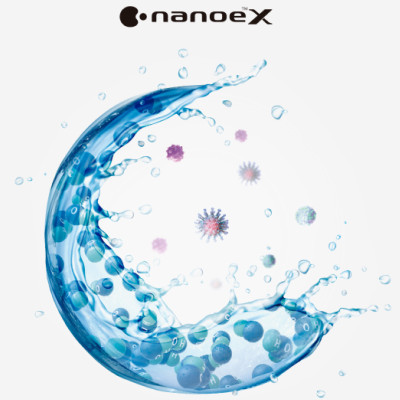
2021-01-27
Visited : 37206
Panasonic Corporation ("Panasonic") announced on January 14, 2021, that the inhibitory effect on the novel coronavirus (SARS-CoV-2) of a representative Panasonic air conditioner equipped with nanoe™ X*1 was verified by Texcell*2, a global contract research organization. Texcell confirmed an inhibitory effect of 91.4% on the novel coronavirus after eight hours in a 6.7m3 area.
Nanoe™ X is a technology that collects invisible moisture in the air and applies a high voltage to it to produce hydroxyl radicals contained in water. Hydroxyl radicals inhibit the growth of pollutants such as bacteria and viruses.
They are characterized by being strongly oxidative and highly reactive, hence a short life span. Contained in tiny water particles, nanoe™ X has a long lifespan and can spread over long distances. It has an inhibitory effect on both airborne and adhered substances.
In September 2020, Panasonic verified, in collaboration with Texcell*2, the inhibitory effect of nanoe™ X technology with the benefits of hydroxyl radicals on the novel coronavirus in a small test space of 45L using a nanoe™ X generator. For further investigation, Panasonic conducted additional tests using a Panasonic air conditioner equipped with nanoe™ X technology in a larger test space.
In these circumstances, Texcell confirmed that nanoe™ X had a 91.4% inhibitory effect on the novel coronavirus in a space of 6.7m3 in eight hours using an air conditioner with nanoe™ X. This testing was carried out in a closed laboratory environment and was not designed to assess efficacy in uncontrolled living spaces.
Panasonic has been researching nanoeTM technology since 1997. Over the past 20 years, Panasonic has verified its effectiveness in a variety of areas, including inhibiting pathogenic microorganisms (bacteria, fungi, and viruses) and allergens, and breaking down PM 2.5 components that have adverse effects on the human body*2.
Panasonic plans to continue to pursue the potential of nanoe™ X technology to address possible risks associated with air pollution such as new pathogenic microorganisms, to create healthy environments for people around the world.
Read the original article on PR Newswire.